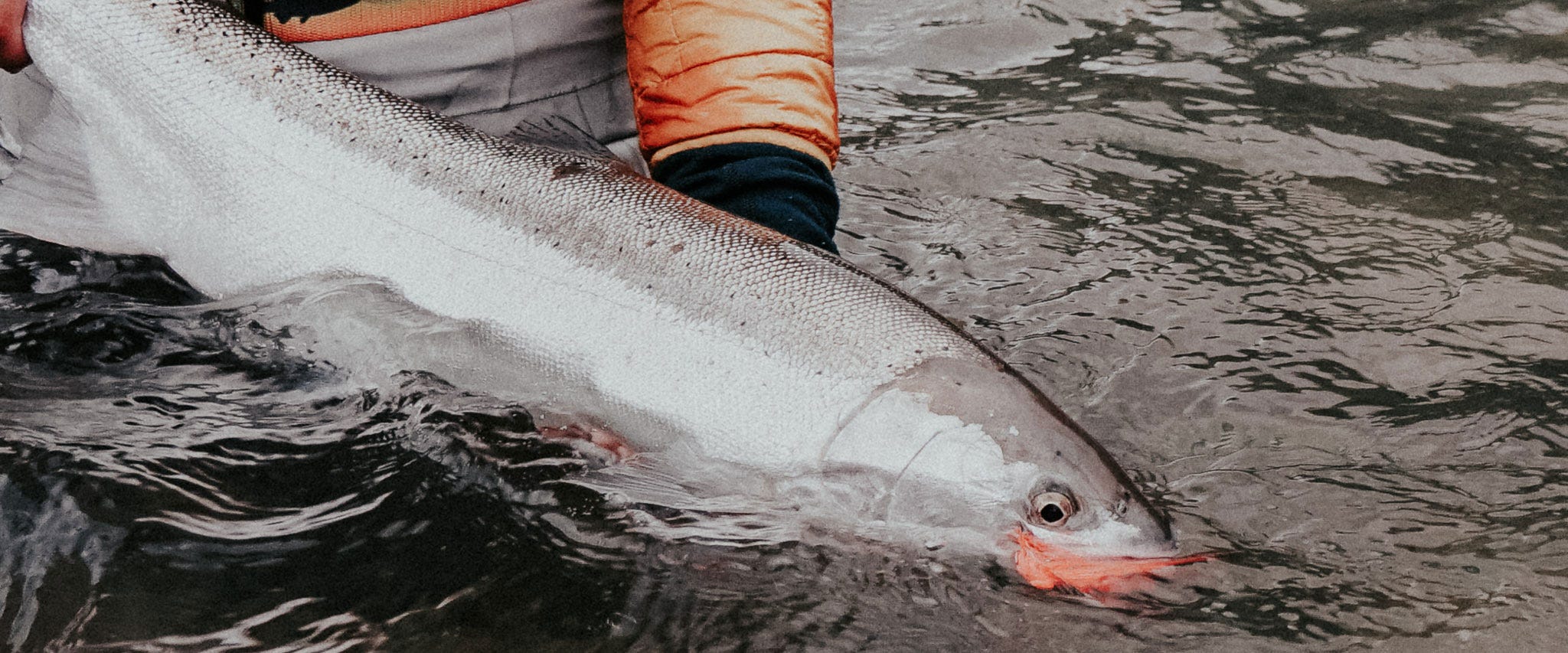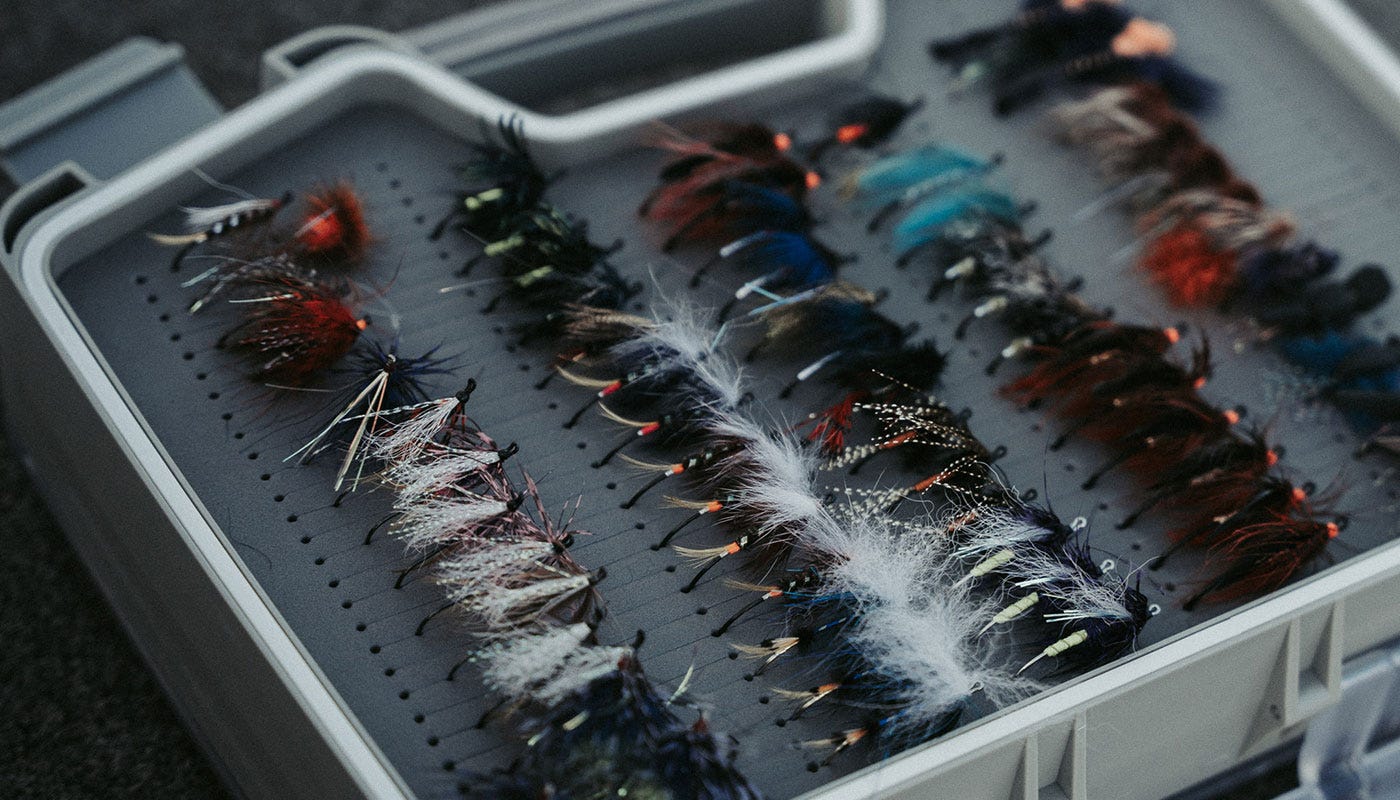STEELHEAD TIMING- How to Catch More Steelhead

Stare at the end of your fly line long enough as it arcs through the heart of your favorite steelhead run, your mind invariably wanders…
Should I change the fly, again?
Wait, was that a bump?
There’s got to be fish out there, right?
Man, that gas station supreme pizza pocket was not the right choice….


Fly fishing for steelhead is a game of questions that sometimes can be answered, and other times it’s a game of pure faith and persistence. Got the line in the water and the fly covering the run, you got a chance. Stay home because it’s not the right time…Well then, it’s a self-fulfilling prophecy.
These kinds of questions within the context of summer run steelhead and timing on the Columbia and Snake River systems can always be answered with a resounding maybe. Sort of….and sometimes you’re right on the money and everything turns golden.
OVERALL CONTEXT TO RUN TIMING
The first base point when trying to decipher when the fish are on their way to your honey hole on rivers like The Deschutes, Klickitat, Clearwater, Grande Ronde and others is to really understand the complexity of steelhead biology and variances from system to system.
In “normal” years, most of the summers that cross the bar on the Columbia are A run fish, having spent 6 months to a year in the ocean before they heed the call of their inner homing beacon. The remainder fill up the B run bucket, that spend upwards of 3 years, or more on the high seas of the North Pacific. Seems simple, right?
On the contrary, there’s a high degree of variability to the size and timing of when some of these runs return, as well as the influence of marine food sources. Some years, a portion of the A runs can look like large resident trout, while others that have put on the feed bag come back much more robust and thicker. Some years are leaner for one component due to freshwater survival factors, low water years on out migration and the real killer, hot water when the return in the summer.


“WHEN WILL THEY GET THERE?”
One of the most interesting factors to steelhead migration is how different they move as a whole as opposed to salmon. While fish like chinook, sockeye and coho tend to hit in one gigantic wave, steelhead live on the edges that come in fits and spurts, spread out over a long window of time. Some of the first steelhead bound for inland rivers will cross into the Columbia in the waning edges of late spring, and others come in late in October and race up the river, into the Snake bearing down on their destination rivers. It’s an ecological way to not put all their eggs in one basket so if a natural disaster was to happen, it doesn’t wipe out an entire run.
Take the Grande Ronde for instance. There’s a cohort of fish that race up from saltwater, braves the baking lakes of water between the lower 4 Snake River Dams and can be found in the GR in mid-September, bound for Oregon’s cooler waters far upriver. Often the bigger B runs come into the Clearwater very late in the calendar. Each river will have different cohorts of fish that come at different times, all coalescing over-winter in preparation for their spawning window of late February and through April.
More and more, you have to pay attention to river temperatures and it’s effect on stalled migrations. It’s not rare at all to see parts of the Columbia and Snake get into the low 70 degree temp ranges and that can put the brakes on what the fish are trying to do. They seek out thermal refugia and will often stray into other tributaries in search of a lower temps. Like any salmonid, water north of 65 degrees F begins to put additional stress on the fish and into the 70s, it’s almost deadly.


A key resource on run timing is the Fish Passage Center’s reporting center which tracks at each dam the daily fish count throughout the Columbia and Snake Rivers. You can check it daily to check progress up the river to give yourself a fighting chance at connecting with a steelhead.
Additionally for the real fish nerds out there, the Columba Basin Research project publishes volumes of data back to 1938 that can show you long term trends on each one of our salmonids relative abundance.
It also must be understood as to where we stand right now in the context of abundance. For the past 7-9 years, we have been witness to a terrible slide in overall numbers of fish returning to the Columbia and Snake. When a typical year should be over 200,000 to 250,000 adult returning steelhead, we have seen a year like 2021 when less than 72,000 fish returned… One of the worst years in recorded history. The ocean hasn’t been doing us favors, and years of low water in outmigration combined with the myriad of dams these fish have to cross have had us in real dangerous times.


The hope is that these runs are cyclical and 2022’s return came back better than expected at over 124,000 fish. We must remind ourselves as stewards of the resource that we must stay away from the shifting baseline syndrome and know there’s a mountain to keep climbing up to a return of abundance. The 2023 return is shaping up to be similar in scope to the prior year’s run with a higher component of A run fish.
THE PRUDENT APPROACH TO FISHING THIS RUN IS TO CONSIDER A FEW KEY ITEMS
Find ways to minimize your impact all while enjoying the gift that these fish are. Pinch your barbs. Keep an eye on water temps and lean into the thought that you don’t need to catch every fish in the river to have a successful day. We need to be out there fishing when the run size will allow, as we need to stay connected to the water, fish and overall ecosystems to stoke the fire. That stoke will keep us coming back and fighting to make sure that we do all we can to see them return, every year, forever.
Now when the line is in the water and the fly is out there hunting, return to your original questions
Nah, don’t change the fly. They eat pink bass worms for gods sake….
Yes, it was a bump. A bump of a 12lb wild hen. Step back up 4 steps, wait a minute or two and tell Tina to eat her food.
And next time, go for the jalapeno cheese corn dog. Always a winner.
